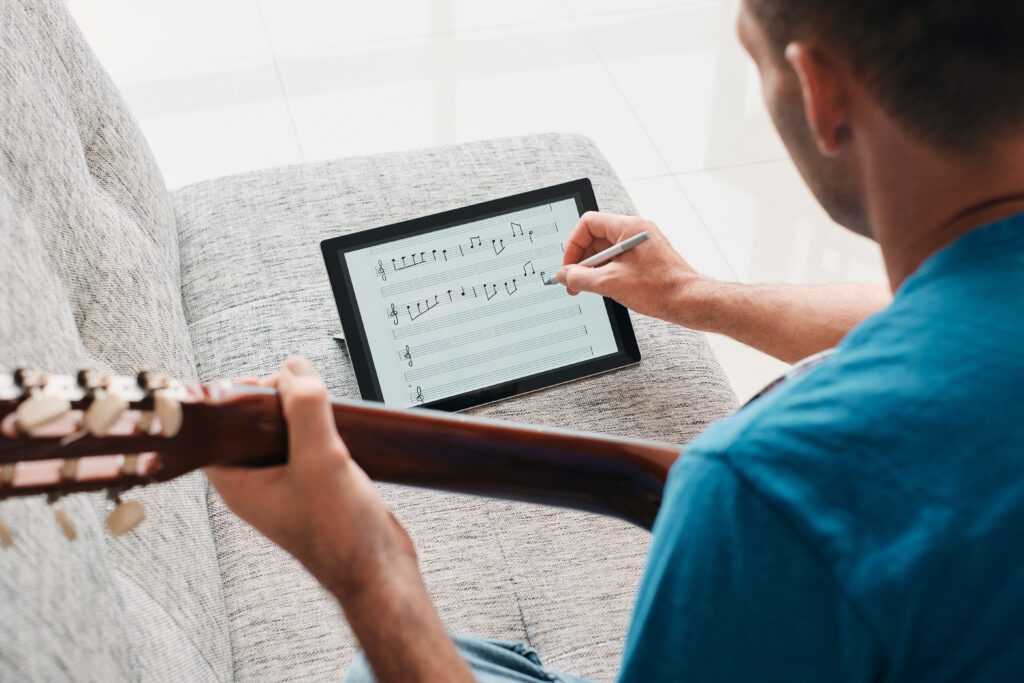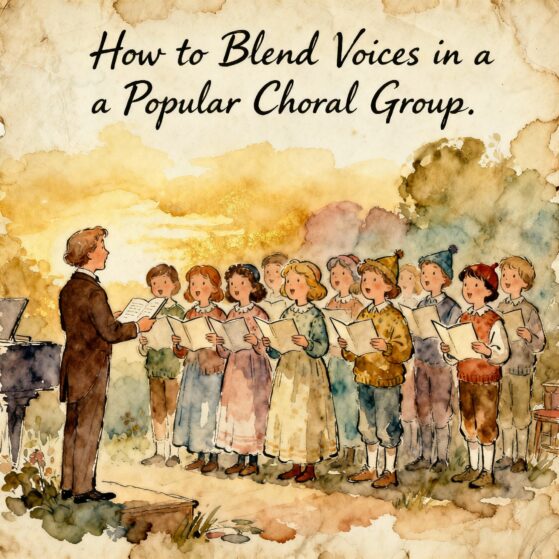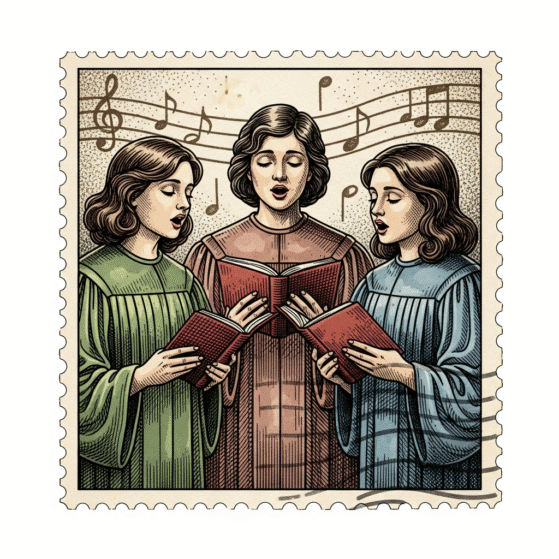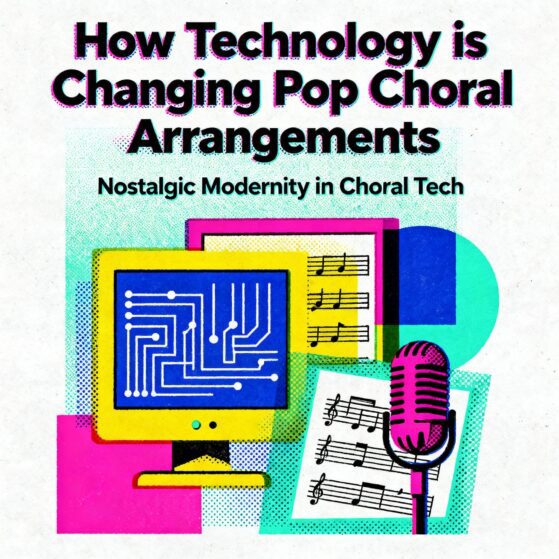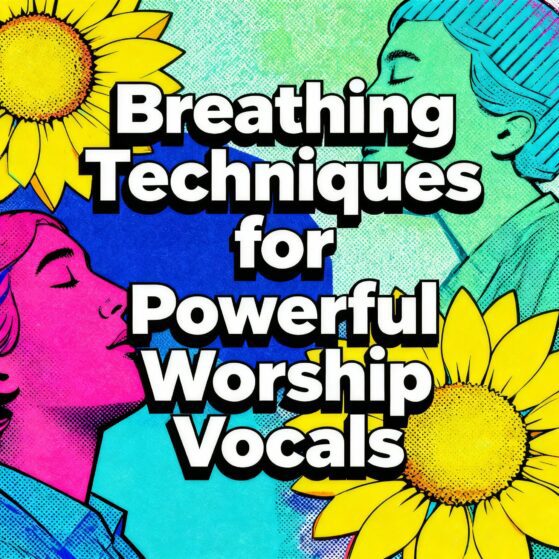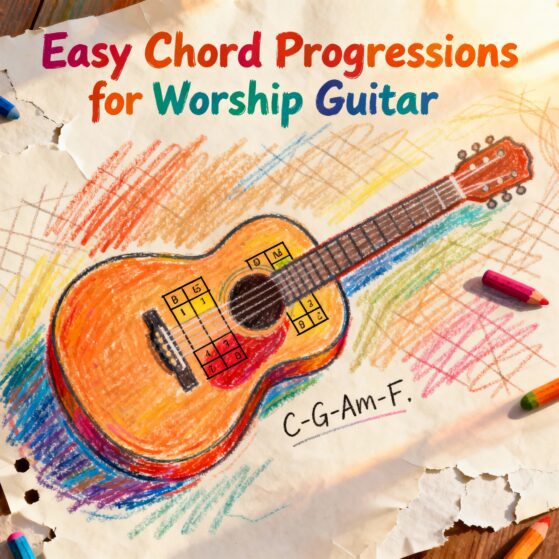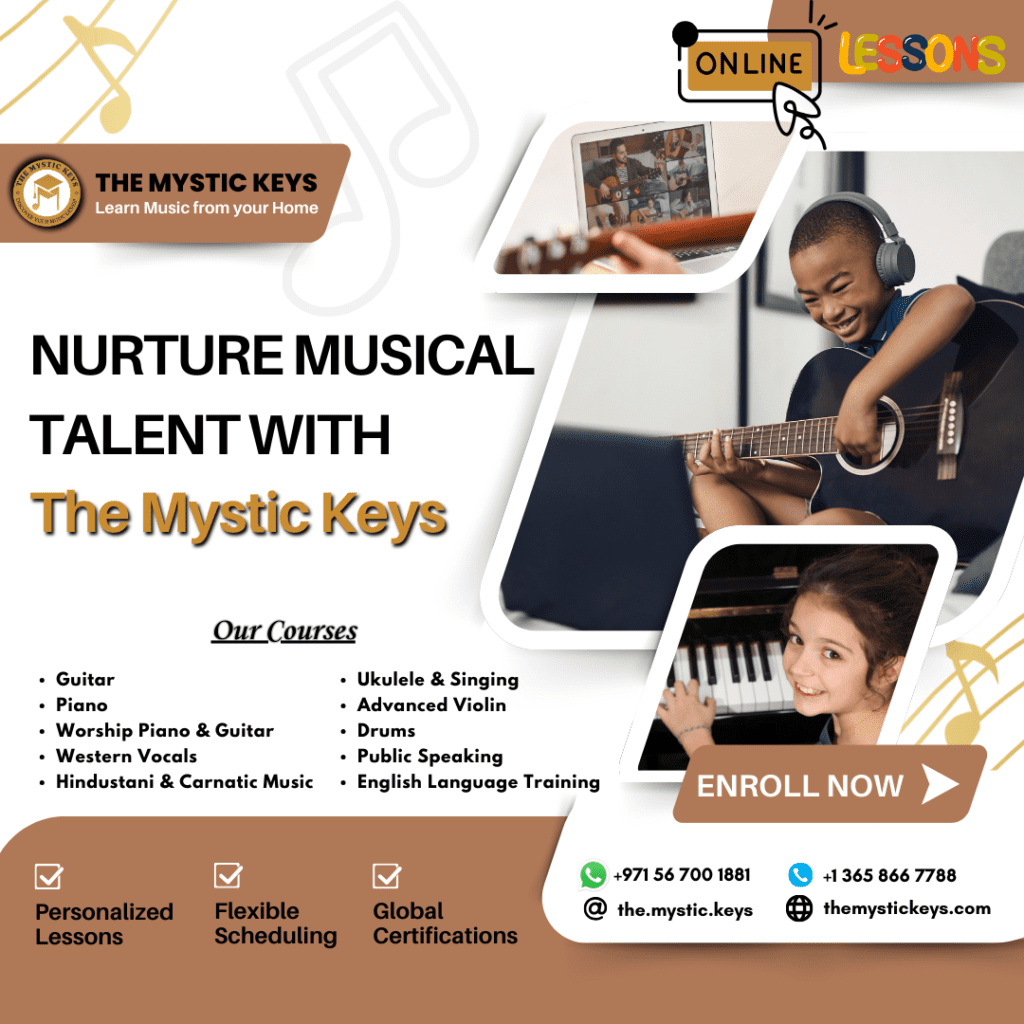How to Read Sheet Music: A Beginner’s Guide for Absolute Beginners
Reading sheet music may look like decoding a secret code. But once you understand the basics, it becomes as natural as reading words on a page. Whether you’re learning piano, guitar, violin, or singing, knowing how to read sheet music helps you play confidently and communicate clearly with other musicians.
Let’s simplify everything and start from the very beginning.
📄 1. What Is Sheet Music?
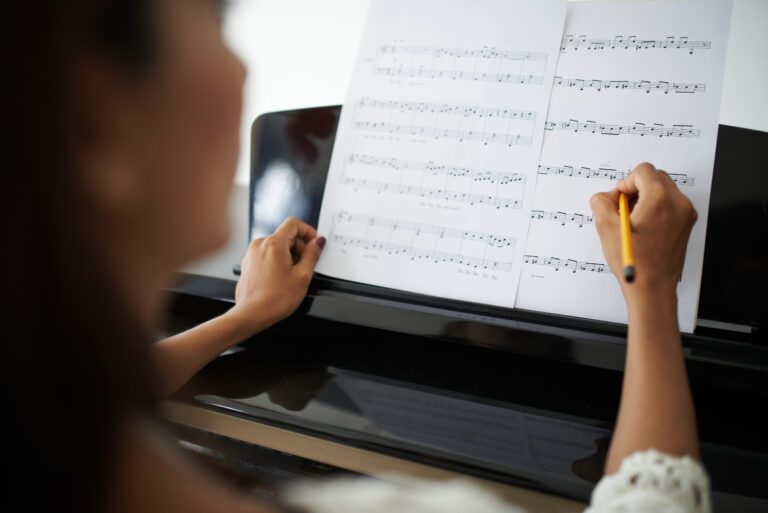
Sheet music is a written form of musical notation. It tells you what notes to play, how long to hold them, and how fast or slow the music should go. It’s like a map for your musical journey.
✍️ 2. Meet the Staff: Your Musical Grid
The staff is a set of five horizontal lines where musical notes are written.
Each line and space represents a different pitch.
Notes placed higher on the staff sound higher in pitch, and those placed lower sound deeper.
🎶 3. Treble & Bass Clef – Two Musical Voices
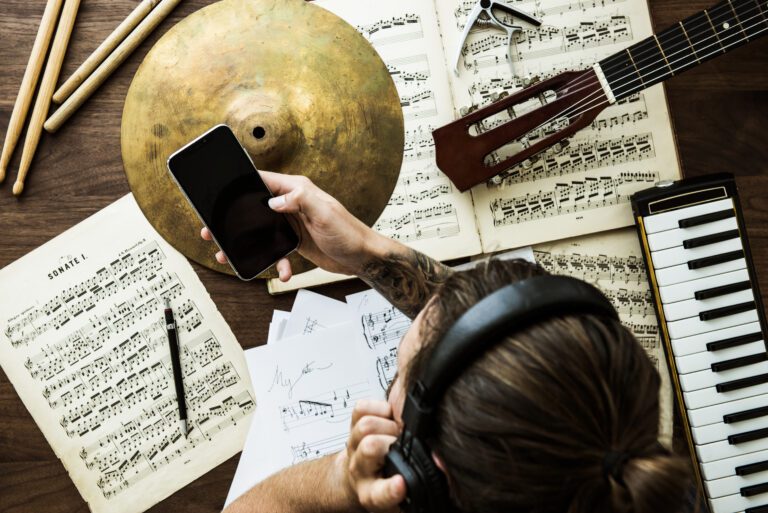
You’ll usually see one of these two clefs at the beginning of the staff:
Treble Clef (𝄞): Used for higher notes. Instruments: piano (right hand), flute, violin, guitar, vocals.
Bass Clef (𝄢): Used for lower notes. Instruments: piano (left hand), bass guitar, cello, tuba.
Each clef helps define which note corresponds to which line or space.
🔡 4. Understanding the Note Names
On the Treble Clef, here’s how to remember the lines and spaces:
Lines (bottom to top): E – G – B – D – F → “Every Good Boy Deserves Fun”
Spaces: F – A – C – E → “FACE”
For Bass Clef:
Lines: G – B – D – F – A → “Good Boys Do Fine Always”
Spaces: A – C – E – G → “All Cows Eat Grass”
⏰ 5. Time Signatures – The Pulse of Music
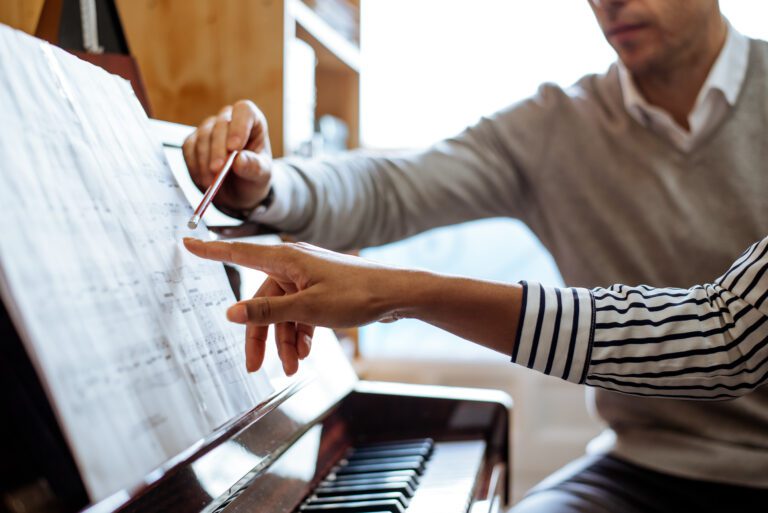
You’ll see numbers at the start of a staff like 4/4, 3/4, or 6/8.
The top number tells you how many beats are in each measure (section).
The bottom number tells you what kind of note counts as one beat (usually a quarter note).
4/4 time is the most common – it’s called “common time”.
🧱 6. Measures & Bar Lines
Music is divided into chunks called measures. These are separated by vertical bar lines.
They help you organize and read music more easily, beat by beat.
🕒 7. Note Durations – How Long to Hold a Note
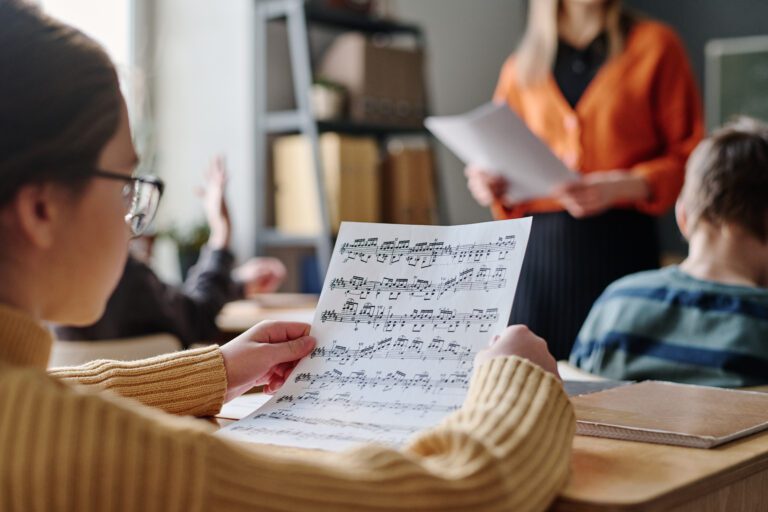
Each type of note has a different duration:
Note Type Symbol Beats in 4/4
Whole Note 𝅝 4
Half Note 𝅗𝅥 2
Quarter Note 𝅘𝅥 1
Eighth Note 𝅘𝅥𝅮 1/2
Sixteenth Note 𝅘𝅥𝅯 1/4
Add rests to this list – they show when to be silent for a specific time.
🔗 8. Ties, Slurs & Dots – Expression Tools
Tie: Connects two of the same note together.
Slur: Smoothly connects two different notes.
Dot: Adds half the original value to a note (e.g., a dotted half note = 3 beats).
These add emotion and feel to your playing.
🎹 9. Practice With Simple Songs

Try starting with “Twinkle Twinkle Little Star” or “Mary Had a Little Lamb.”
Use sheet music, point out each note, and play slowly with both hands if you’re learning piano. The more you practice, the faster it becomes natural.
💡 Tips to Learn Sheet Music Faster
- Label notes on the staff. (Write A, B, C, etc. above each note at first.)
- Use flashcards to memorize notes and rhythms.
- Clap out rhythms before you play them.
- Start slow and increase speed gradually.
- Use apps or games that teach sight-reading.
🧠 Why Learning to Read Music Is Important
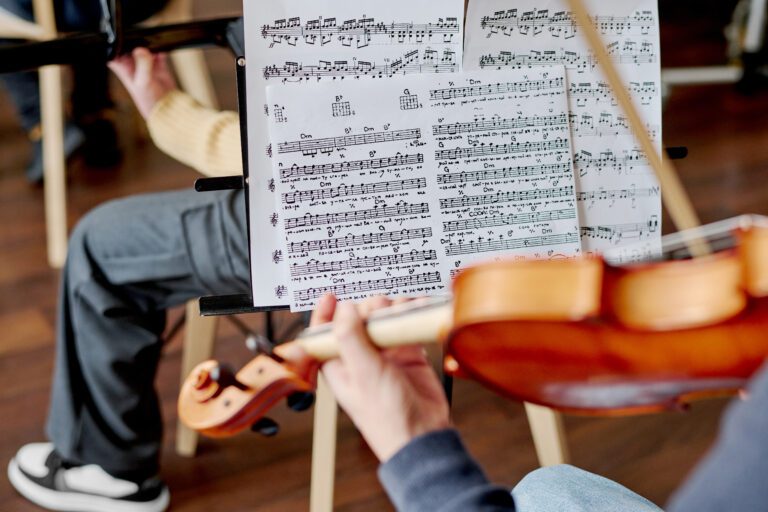
- You can play any song just by looking at the sheet.
- It opens the door to classical, jazz, and choral music.
- It improves memory, coordination, and listening skills.
- You can join bands, orchestras, or perform confidently.
🎓 About The Mystic Keys
At The Mystic Keys, we specialize in one-on-one online music education through Zoom. Whether you’re learning piano, keyboard, guitar, vocals, or music theory, we offer:
- 🎼 Flexible scheduling
- 📚 Personalized notes and session recordings
- 🏅 Trinity College London certification support
- 👩🏫 Grade 8 and highly trained teachers
- ✨ Performance videos and revision support
- 💬 Student-teacher-director group for all session material
We’re here to guide you from your first note to your dream performance.
For more information and exciting resources about learning music, visit our website at The Mystic Keys. For more music content and exciting offers follow us on
Facebook, Instagram, YouTube, LinkedIn, Twitter, Pinterest, and Threads,
Related Blogs
When a child begins their musical journey, it is not just an individual pursuit—it becomes a family experience. Behind every young pianist, guitarist, vocalist, or violinist is a parent who encouraged their first note, waited outside during countless music lessons for children, or clapped louder than anyone at their first recital.
The Best Way to Train Your Ear for Music
A well-trained ear is one of the most valuable tools any musician can have. Whether you’re a singer, instrumentalist, producer, or composer, your ability to recognize pitch, rhythm, harmony, and melody will significantly enhance your creativity and confidence.
True Signs You’re Addicted to Music? They’re everywhere. Music isn’t just something you listen to—it’s something you live. If you’ve ever caught yourself air-drumming in public or turning a simple walk into a full-blown concert in your head, you’re not alone.


